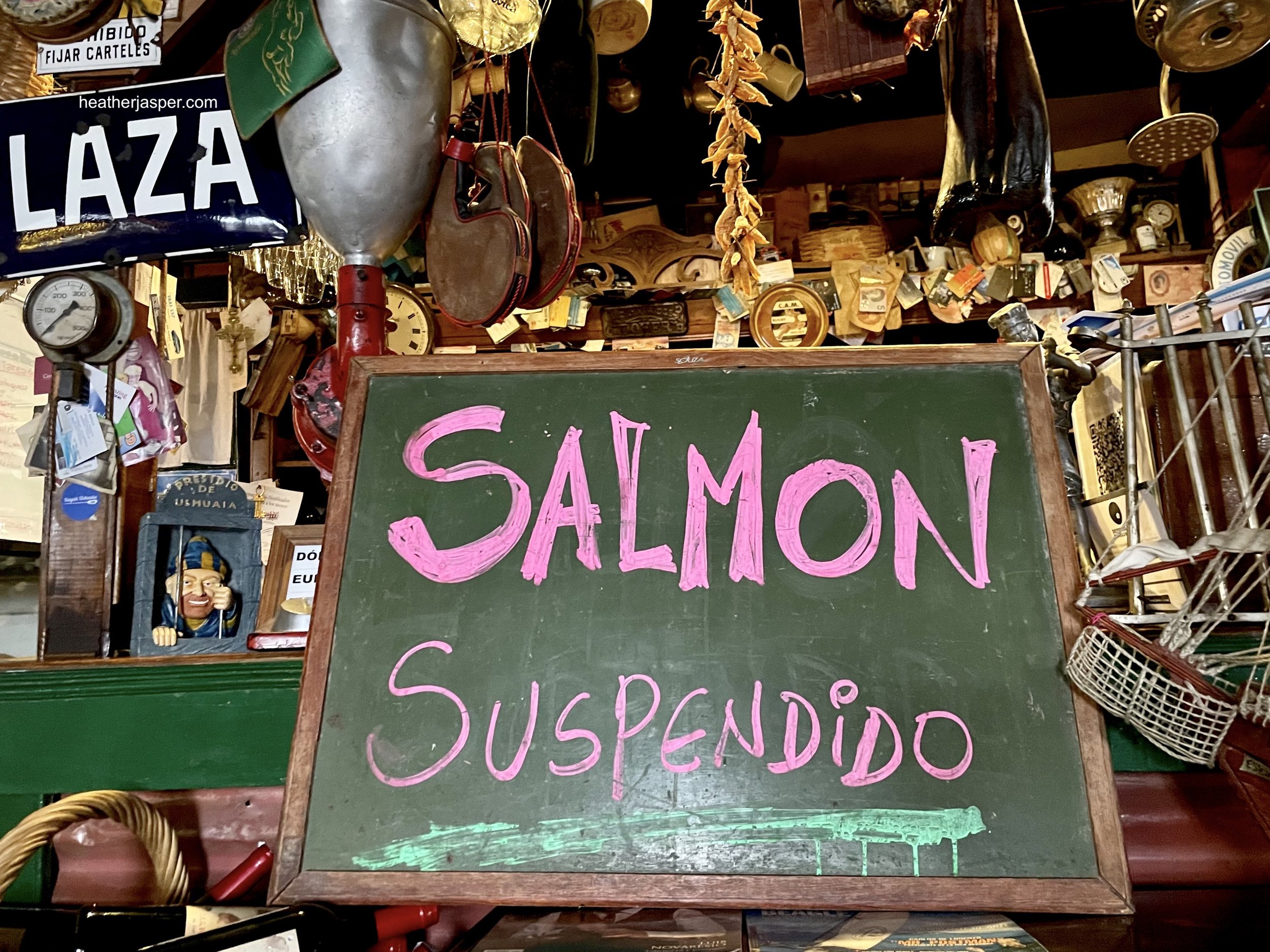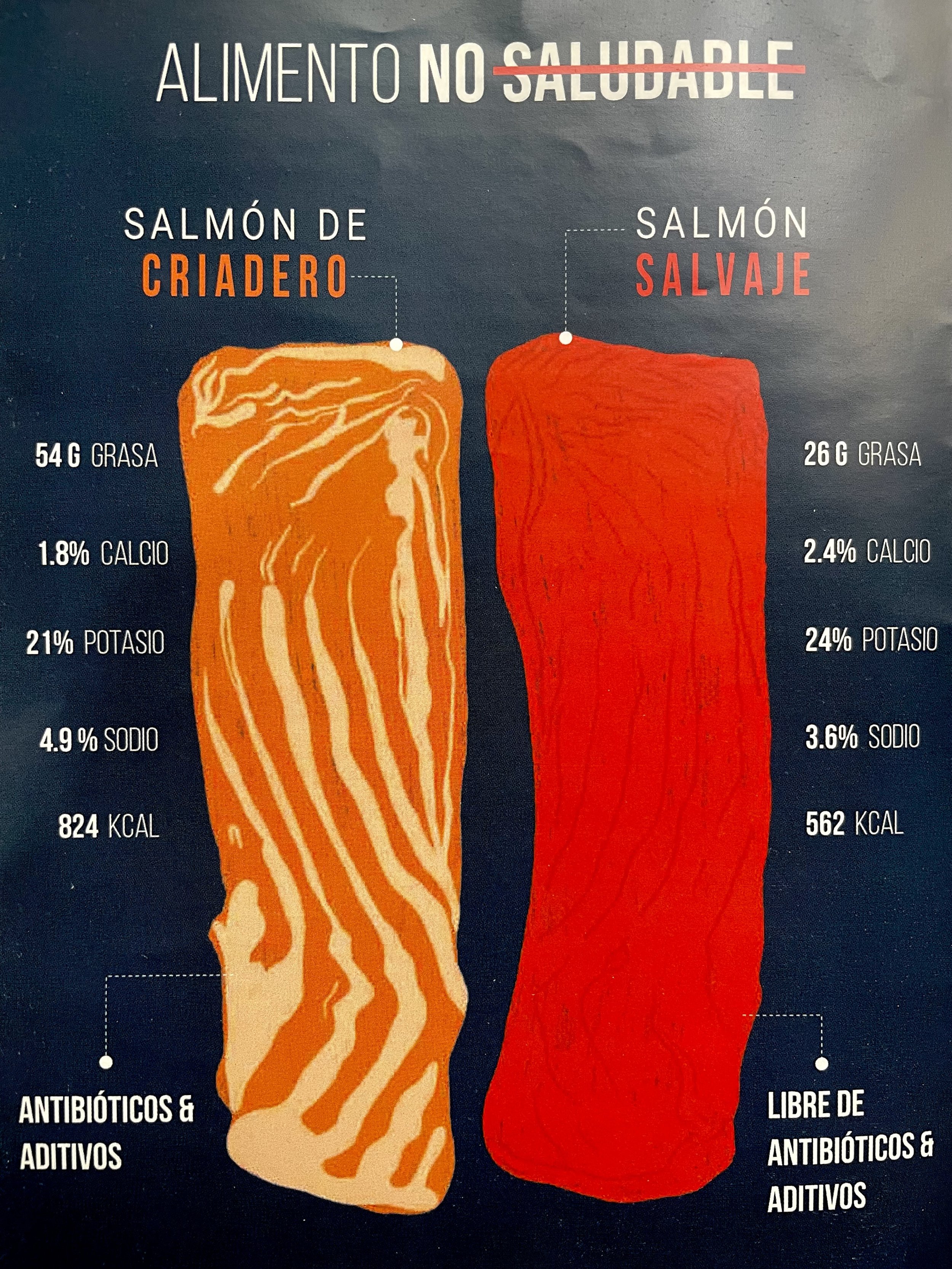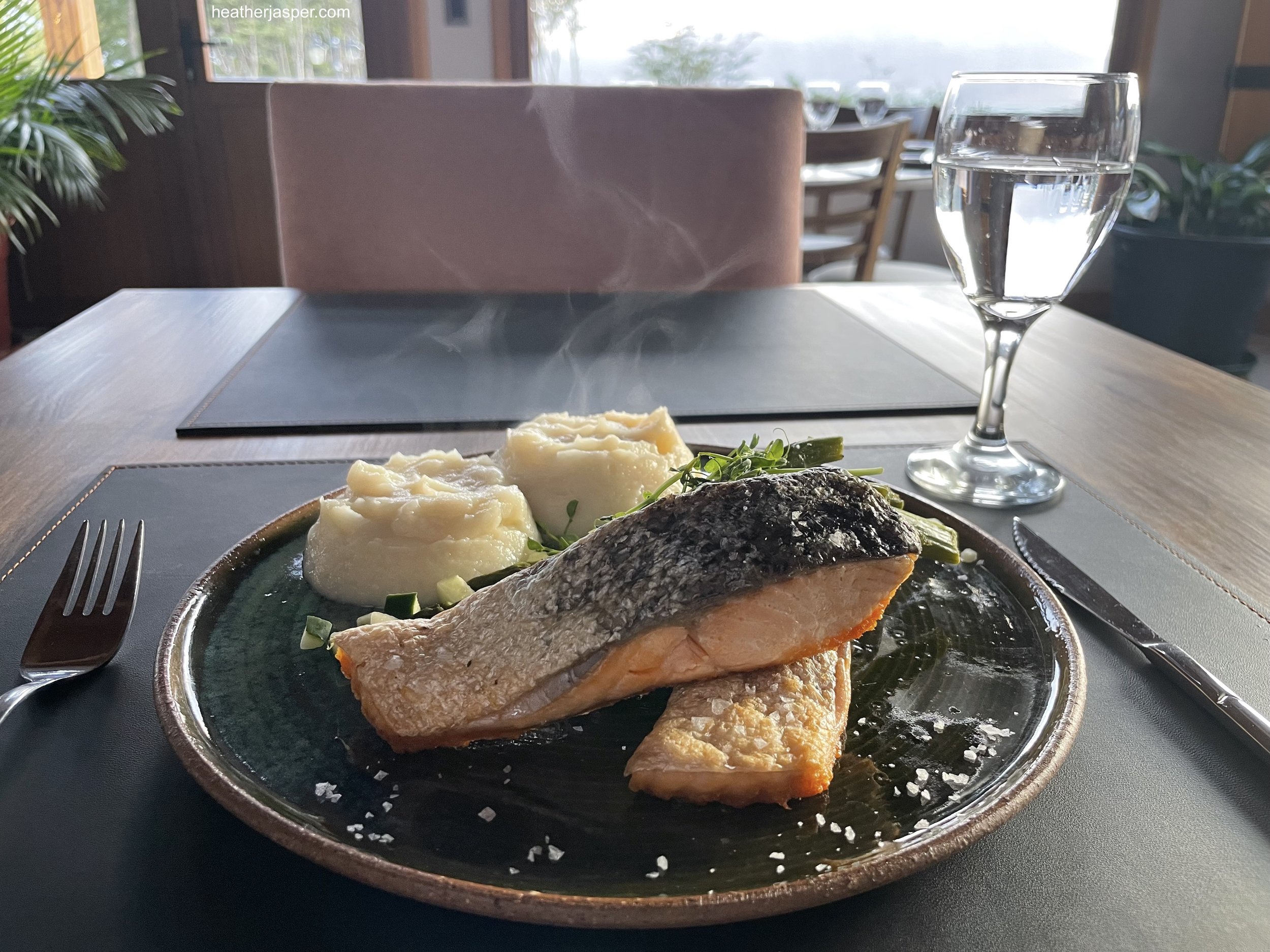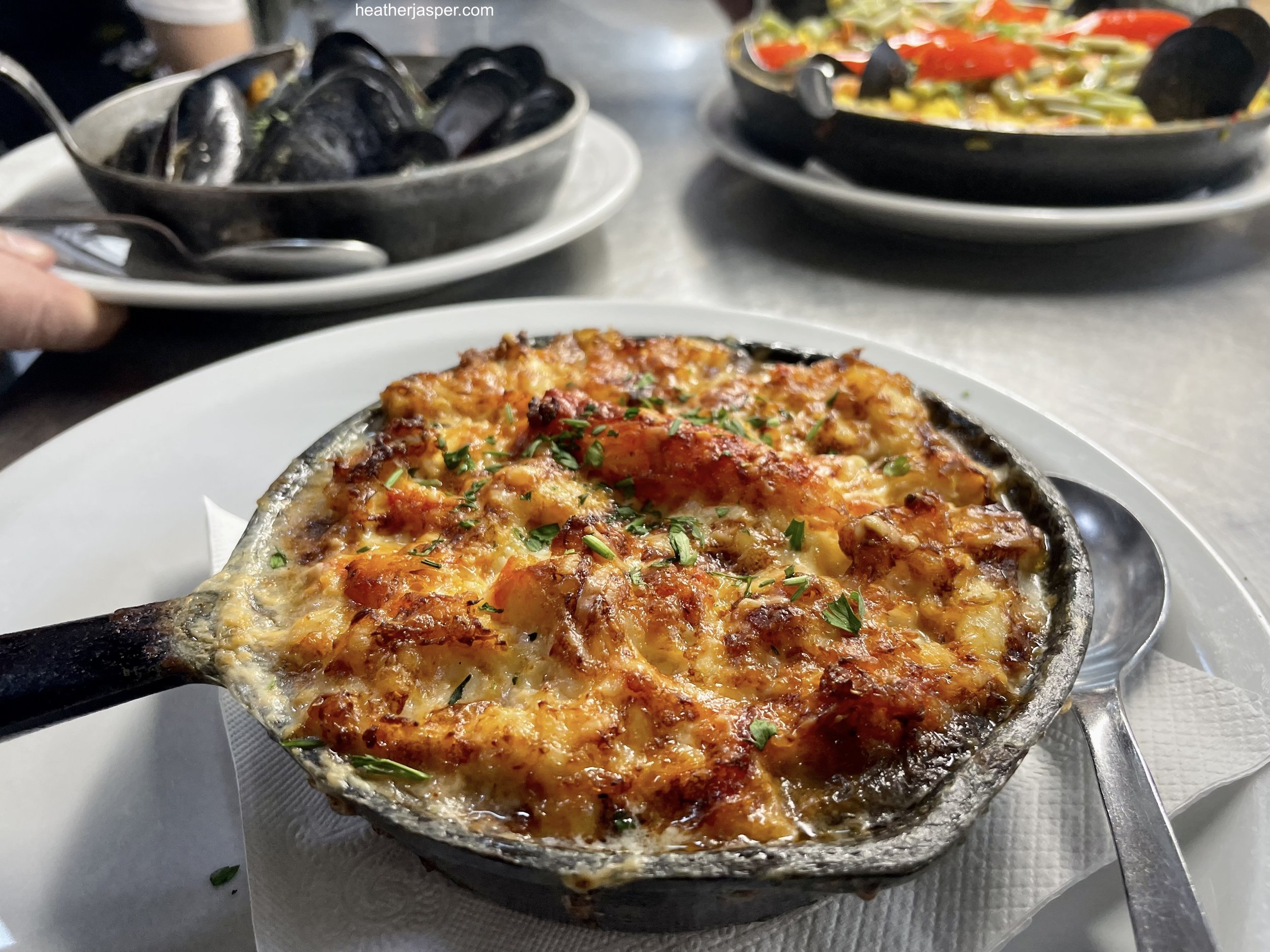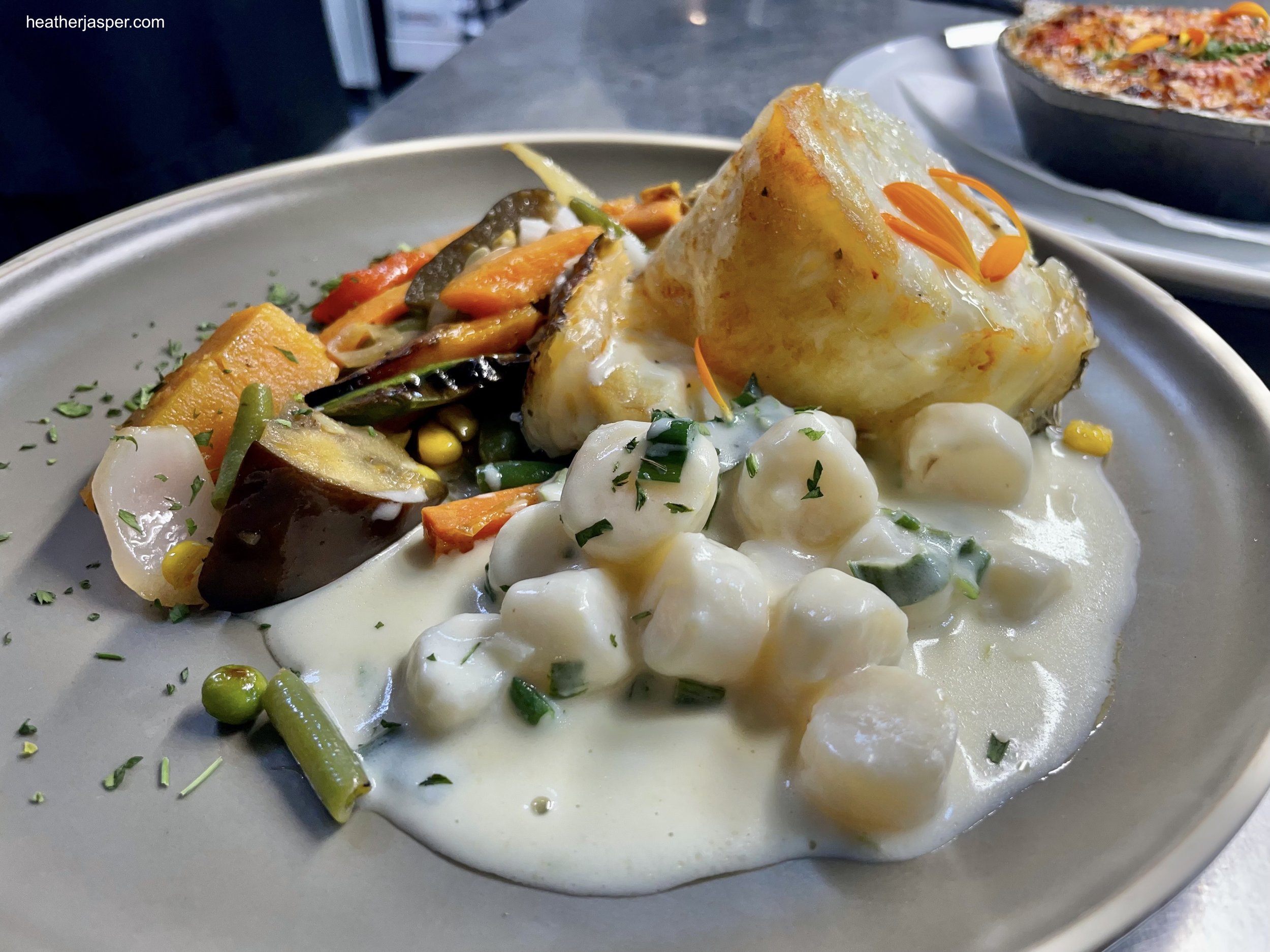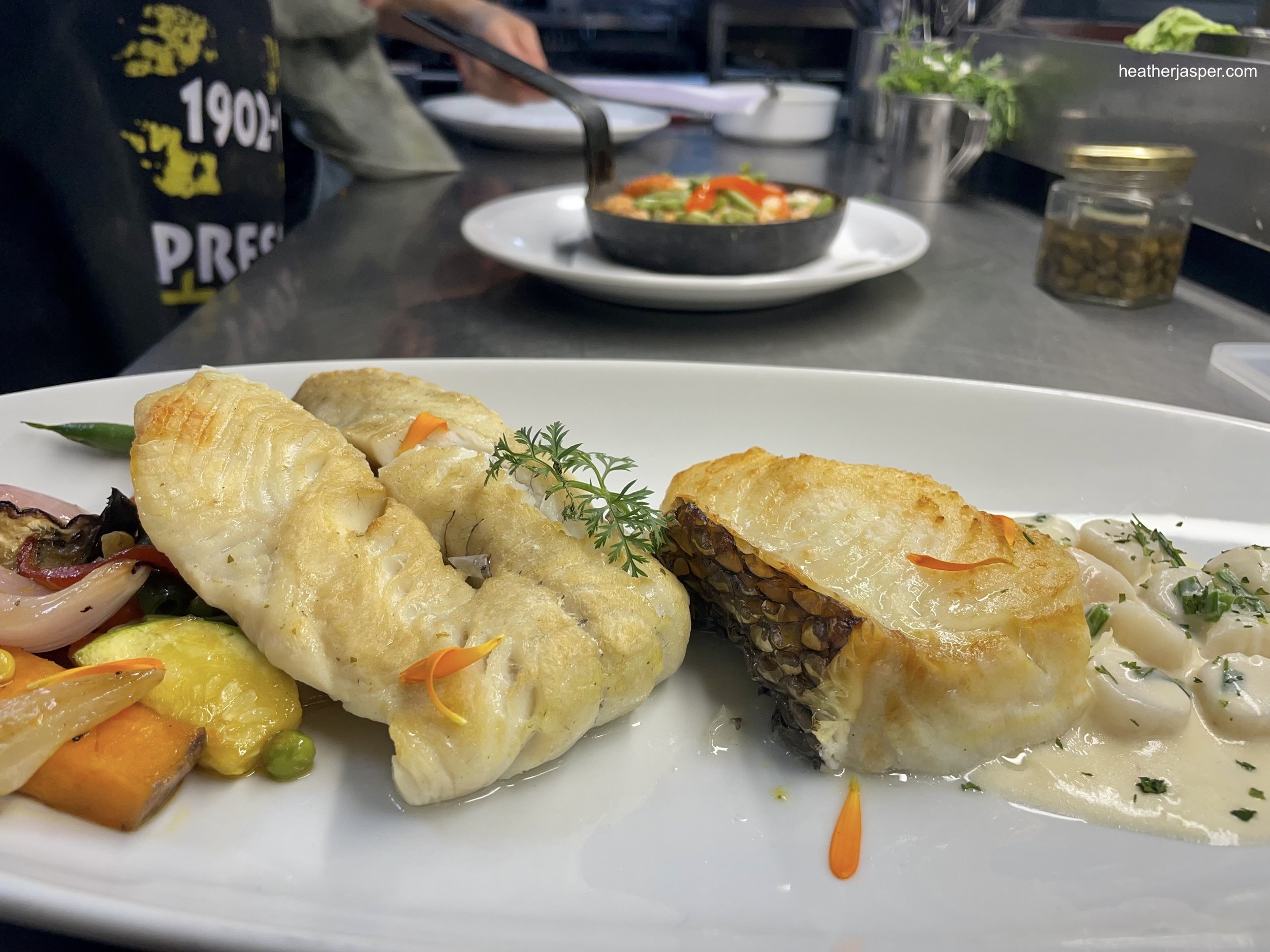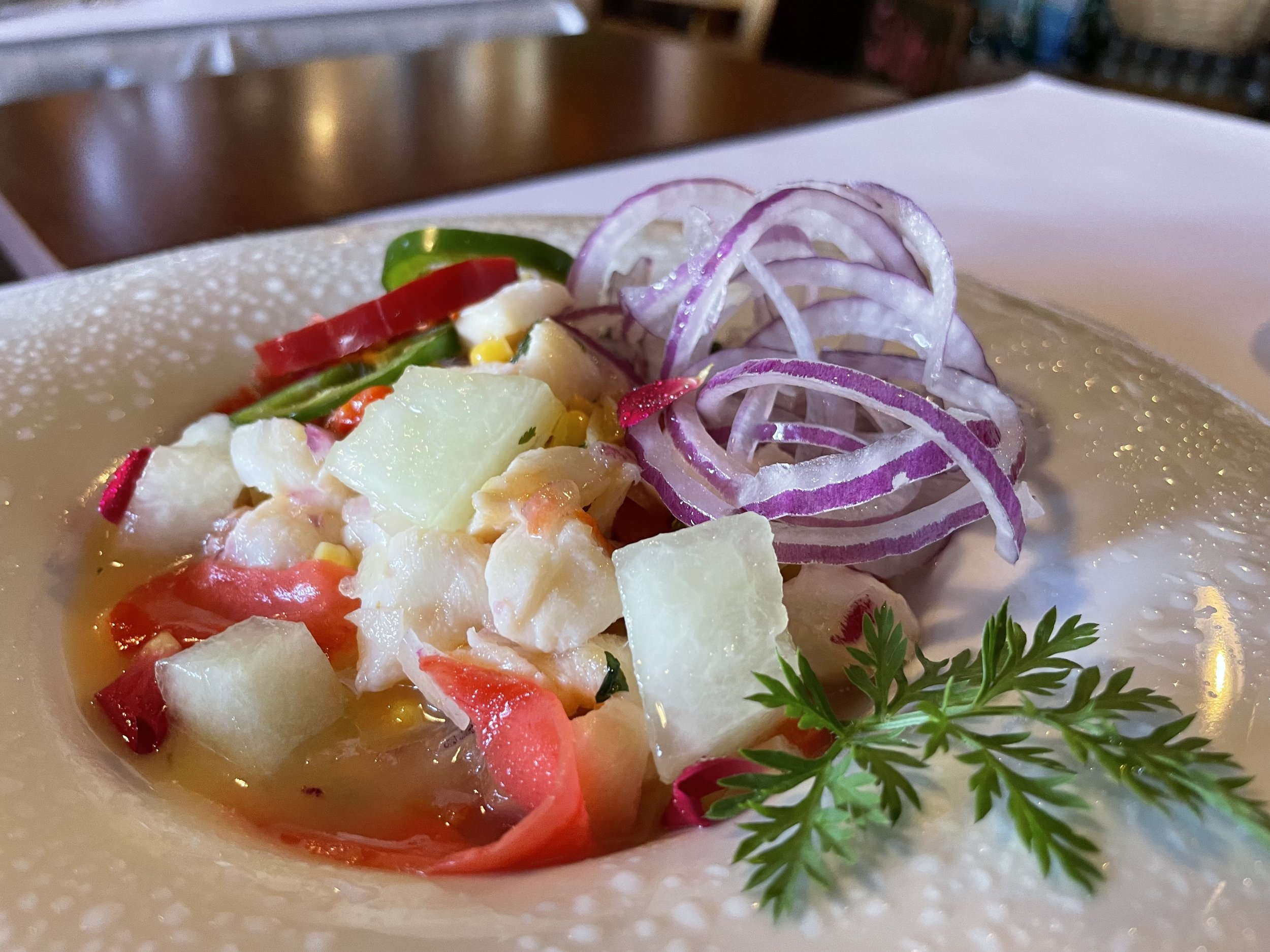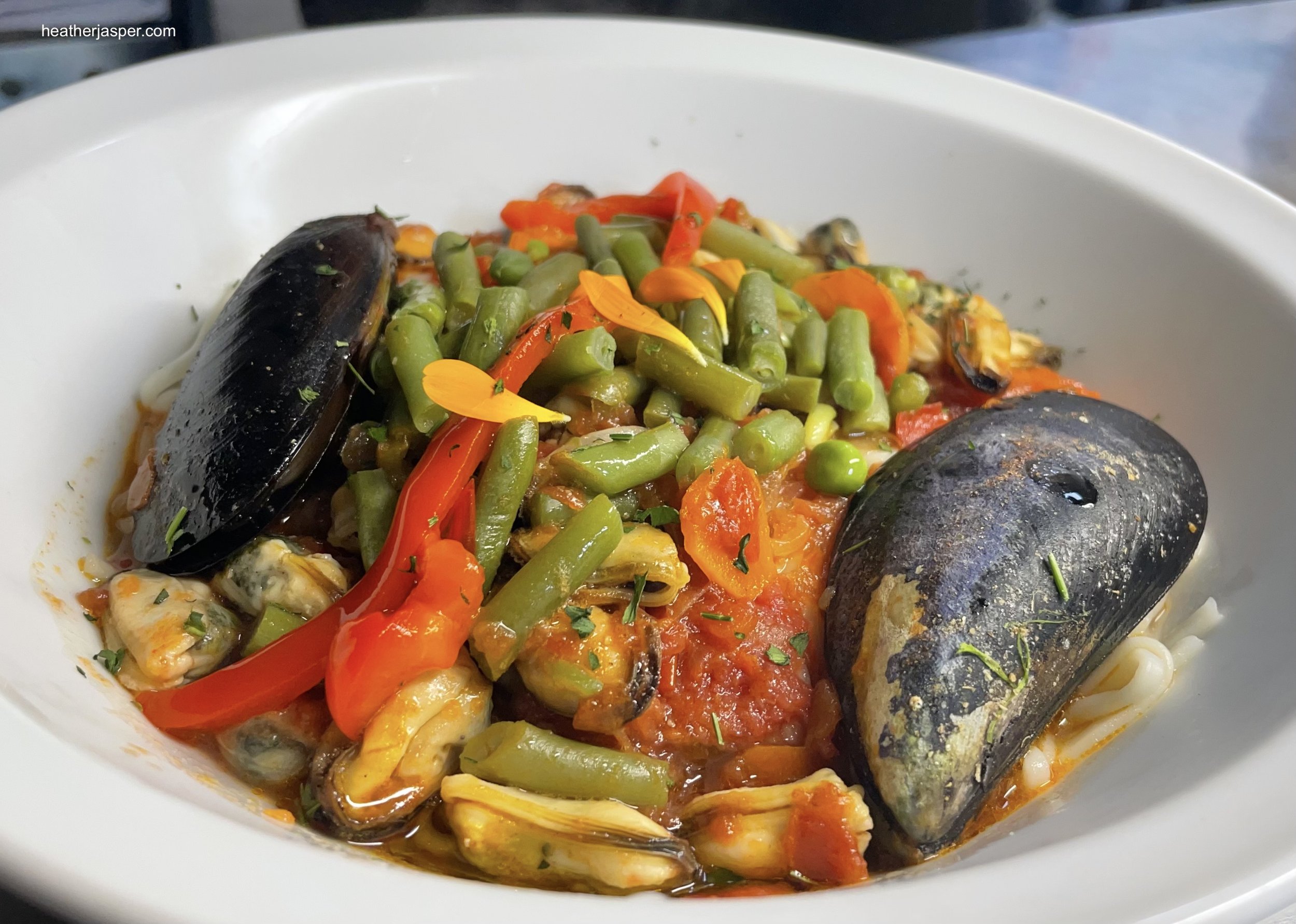The Fight Against Salmon Farms
“We were not well organized, and we didn’t have good leadership,” marine biologist Gustavo Lovrich told me. “Politicians were working hard to discredit us, and we got lucky.”
In 2019 a handful of citizens of Ushuaia, Argentina achieved the truly unimaginable and won their David & Goliath battle against the salmon farming industry. The year before, the Argentine government had signed an agreement with the King of Norway and spent over $90,000 USD on a study to show how salmon farming in the Beagle Channel could be profitable. The study was not supposed to show what the environmental impacts would be, but only to analyze the profitability of industrial salmon farms in the area.
Salmon farms in the ocean cause significant environmental damage to wildlife and to the tourism industry that depends on a pristine environment. But what is a salmon farm? Picture a giant net floating in the water, with the top open. Salmon are first hatched in fresh water in laboratories and then brought to the net in open water when they’re too big to swim through. Animal rights activists like Animal Equality warn that salmon are subjected to cruel conditions.
“They endure high levels of ammonia and nitrates due to concentrations of urine, feces, and chemical residue. Parasites like sea lice often feed on their gills, internal organs, and their blood. And injuries, illness, and unnatural behaviors like aggression are commonplace,” Animal Equality warns.
To treat injuries and illness, companies dump massive quantities of antibiotics and hormones into the nets, some of which are consumed by the salmon. The majority of those chemicals filter down and land on the ocean floor or are swept away by ocean currents and are consumed by all kinds of marine flora and fauna.
Creating a Consensus
For Ushuaia to speak with one unified voice, a lot of different groups had to come together. Scientists and environmentalists teamed up with the local fishing and tourism industries. Alliances were formed between Chilean Puerto Williams on the south side of the Beagle Channel and Argentine Ushuaia and Puerto Almanza on the north side of the channel.
According to the outdoor brand Patagonia, “consequences of salmon farming include massive salmon mortalities, intensification of toxic algae blooms (such as red tide), introduction of exotic species, the loss of local fauna, generation of dead zones, entanglement of marine mammals, and bacterial resistance.”
Giant nets of salmon obviously attract salmon eaters, like seals and sea lions. Like bears used to entering campsites and stealing food, this spells disaster for wildlife. The only way to prevent conflict between those who work at salmon farms and wildlife, is to not have salmon farming in the first place.
The context of salmon farms in both Argentine and Chilean Patagonia is completely different from in North America or Europe. For one, salmon are not native to the southern hemisphere. Salmon are top predators and since they were introduced to Patagonia, they have wreaked havoc on native fish populations and consequently the marine ecosystem as a whole.
Growing up in the Pacific Northwest, I learned that salmon are sacred for Native American and First Nations populations. I learned that dams and overfishing were killing salmon before they could get to their spawning grounds. Every year fewer and fewer salmon returned to Redfish Lake in Idaho, which had been named for the massive influx of salmon who turn red as they swim upstream to spawn where they themselves hatched. I remember when, in 1994, only one female sockeye salmon returned to Redfish Lake.
Wild Caught Salmon
This is the natural color of the wild caught salmon I was served by Juan Bahamonde of Viejo Lobo de Mar Expediciones in Chilean Tierra del Fuego.
In the US, I learned that fishing wild salmon endangered a species that was already pushed to the brink by dams on the rivers where they needed to spawn and by overfishing out at sea. Lots of people told me about the need to protect wild salmon, but few talked about the problems of salmon farming.
In Patagonia, salmon are not sacred. They are an invasive species. Therefore, fishing wild salmon in South America, even what may seem to be overfishing, is good for the environment. Gill nets stretched across river mouths to catch salmon before they can swim upriver to spawn are in fact protecting native fish populations. My first time in Caleta María, in March 2022, I happily ate wild caught salmon for lunch and dinner every day—for a week. My host, Juan Bahamonde stretched a net across the mouth of the Azopardo River and fed all his friends, family and neighbors with the salmon he caught.
Some of these salmon were purposefully introduced and some escaped from the fish farms. Nets break, they get holes in them; they wear down and salmon escape. No net is foolproof, and no industrial fish farm can promise that their fish won’t escape. A few escaped salmon in Norway or Alaska doesn’t have much of an impact on the environment—but in Patagonia it has a massive impact.
It's tragic that an animal so respected and revered in the northern hemisphere can be nothing but a dangerous invasive species in the southern hemisphere. To bring the catastrophe closer to home, I learned that many of the problem fish in Patagonia are “Cowlitz River Hatchery spring-run brood stock from the Lower Columbia River, Washington, U.S.A.8. The other open-ocean ranching operation took place further south in the Magellan region (51°S) during the period 1982–1989 using University of Washington Hatchery fall-run broodstock, Puget Sound, Washington.” This is from a scientific report published by Nature.
Why farm salmon in South America anyway?
One reason is the lax environmental protections allow corporations to pollute in a way that they couldn’t in North America or Europe. Those corporations have a lot of money and a lot of lobbyists.
So, how did a handful of people in Ushuaia fight against an entire industry, plus the economic pressure of governments in North American and Europe? If they weren’t organized and didn’t have good leadership, how did they win?
“We have the same cultural and environmental values,” Lovrich told me.
Scientists and environmentalists teamed up with Ushuaia’s fishing and tourism industries. Alliances were formed between Chilean Puerto Williams on the south side of the Beagle Channel and Argentine Ushuaia and Puerto Almanza on the north side of the channel. This was no small feat. Only 40 years before, a war had almost broken out between the two countries over control of the Beagle Channel. I saw rusted cannons in Puerto Almanza, pointing at Puerto Williams. In Puerto Williams, I saw bunkers where arms had been pointed towards Puerto Almanza.
Still, Ushuaia has a population of about 60,000 and Puerto Williams has only 3,000. Even with all the scientists, environmentalists, fishers, and tourism workers together, the crowd was small. There were so few of them, that they each needed to make as much noise as possible. One of the loudest, who continues to loudly warn against salmon farms, is Lino Adillón, owner of Volver restaurant in Ushuaia, Argentina.
Whenever I asked people in Ushuaia who I should talk to about the salmon farms, the first name they always suggested was Adillón. I finally caught up with him at his restaurant, where he allowed me to interview him for an hour between the lunch and dinner rushes. I asked him how he worked with other chefs to join the fight with the environmentalists and the tourism industry. First, he wanted to clarify that he’s not a chef, he’s a cook, but when he got famous chefs to come to Ushuaia, the press finally started to pay attention.
“When Christophe came to Ushuaia, the journalists appeared,” Adillón told me. Christophe Krywonis is one of the most famous chefs in Buenos Aires. “There were at least forty journalists from all over the world.”
Far from his native France, Krywonis is well versed in the problems of farmed salmon. “Salmon is five times more toxic than hamburger from any fast food restaurant,” he is quoted in anti-salmon farming pamphlet widely distributed in Ushuaia. He cites the main reason for the toxicity as “the astronomic quantity of antibiotics” that are fed to farmed salmon.
Farmed Salmon is Not Healthy
This graphic compares the fat content, calcium, potassium, sodium and calories of farmed salmon (left) with wild salmon (right). At the bottom, it says that the farmed salmon has “antibiotics and additives” while the wild salmon is free of antibiotics and additives.
I can attest that the color difference is accurate.
That’s what I heard echoed over and over in Ushuaia. Farmed salmon were an environmental disaster and eating them was a health disaster for humans as well.
“After 25 years selling thousands of farmed salmon in all our restaurants, we decided to ban them because they’re already destroying the health and soul of our seas,” said Argentine chef Francis Mallmann. “It’s never too late to learn and start again. We apologize for the damage we have caused.”
When I asked Adillón what it has cost him to be so front and center in the fight.
“Money,” he said without hesitating. When he entered the fight, he decided to immediately stop selling salmon in his restaurant. He opened his deep freeze and told local restaurants that they could help themselves to all the salmon he had in stock. Salmon is popular and not selling salmon decreases his profits significantly, but he says it’s worth it. His conscious wouldn’t let him continue to sell a product he now knows is toxic for the marine ecosystem and for his clients who eat it.
It’s a fight Adillón knows has been won for now. Corporations don’t give up easily when they see where profits can be made. For the Beagle Channel to be protected, along with all the marine flora and fauna, plus the people who live and work in the region, he knows not to let his guard down.
My Mistake
Before I understood the implications of ordering salmon in Ushuaia, I did just that. This was about two weeks before I met Adillón and really wrapped my head around why farmed salmon shouldn’t be bought or sold in Ushuaia. I hope that more restaurants will follow Volver and stop serving salmon.

